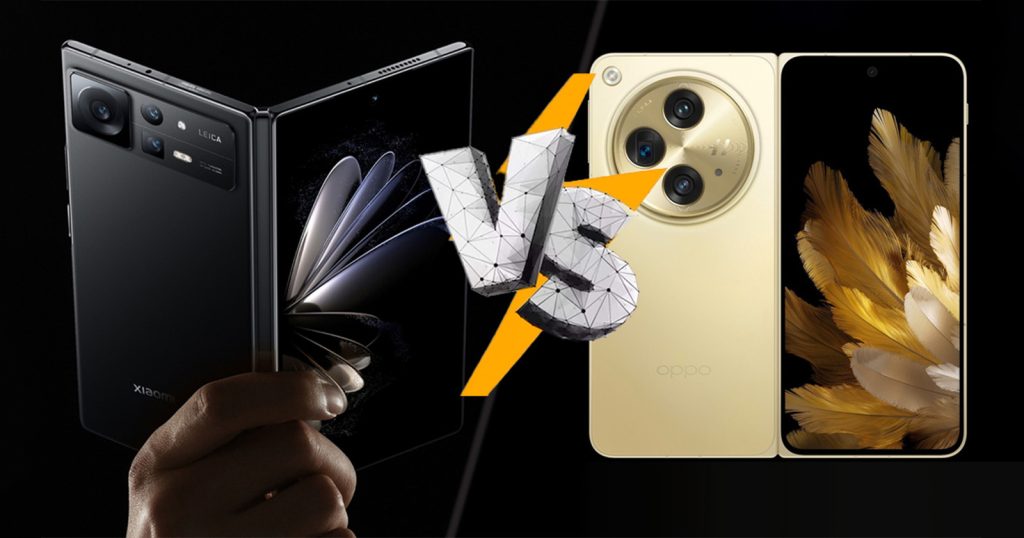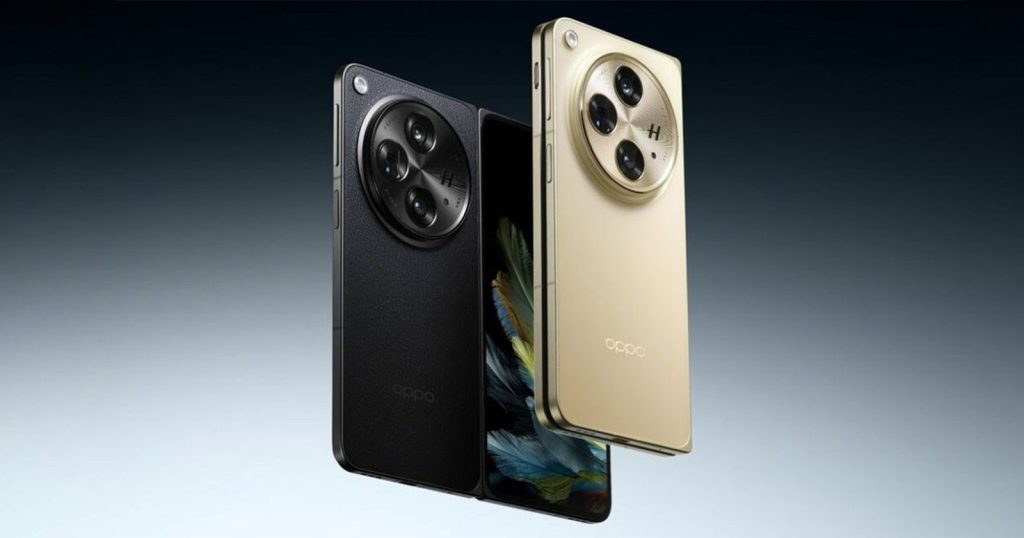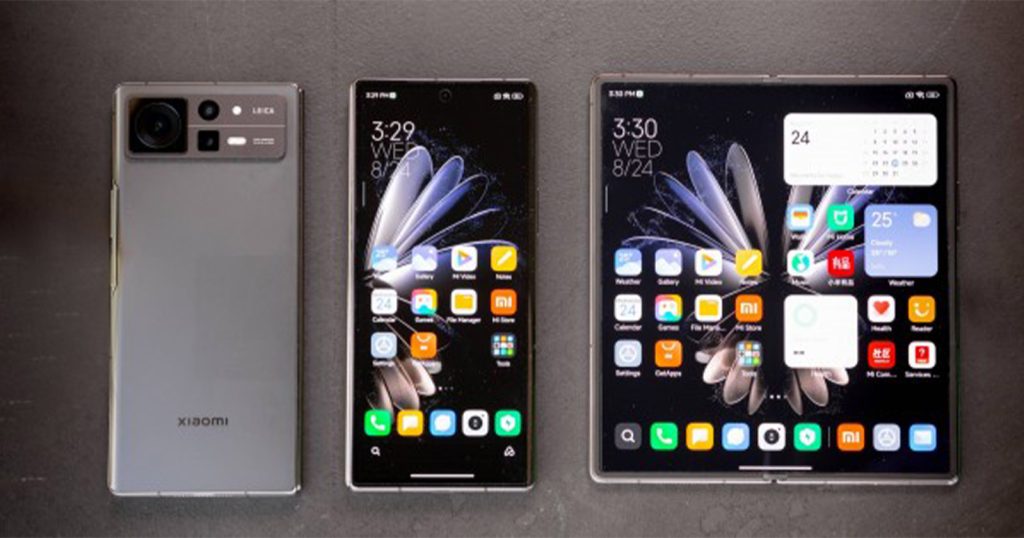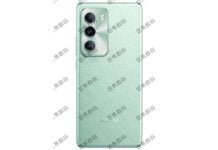The popularity of foldable phones is increasing day by day. Almost every month, we see one or two new additions to this generation. There are even rumors suggesting that Apple is working on a foldable iPhone. However, when we look at the current devices available in the market, two products stand out: the Oppo Find N3 and the Xiaomi Mix Fold 3. Each of these devices is nothing short of a technological marvel, making it a challenge for users interested in purchasing a foldable smartphone. We compared the features, design, prices, and capabilities of the Find N3 vs. Mix Fold 3 to answer the question, “which one is better?”
Oppo Find N3 vs Xiaomi Mix Fold 3 Specifications
Please don’t misunderstand us; both the Oppo Find N3 and the Xiaomi Mix Fold 3 are fantastic phones. As Gizmochina editors, we genuinely appreciate both brands and closely follow their products. Our content’s primary purpose is to guide those interested in purchasing a foldable smartphone and to clear up any confusion. Let’s begin our comparison by looking at the technical specifications of the Oppo Find N3 vs. Xiaomi Mix Fold 3.

| Specs | Oppo Find N3 | Xiaomi Mix Fold 3 |
|---|---|---|
| Inner display | 7.82-inch OLED display, 2268×2440 pixels resolution | 8.03-inch UltraVision Display 1080×2520 pixels resolution |
| Outer display | 6.31 inch OLED display, 2484×1116 resolution | 6.56-inch AMOLED E6 screen 1916×2160 pixels resolution |
| Processor | Qualcomm Snapdragon 8 Gen 2 processor, Adreno 740 GPU | Qualcomm Snapdragon 8 Gen 2 5G processor, Adreno 740 |
| RAM | 12GB/16GB LPDDR5 | 12GB or 16GB LPDDR5X |
| Storage | 512GB/1TB UFS 3.1 internal storage | 256GB/512GB/1TB UFS 4.0 |
| Rear camera | 50MP+48MP+64MP Triple rear cameras | 50MP main sensor, 8MP ultrawide sensor, 10MP telephoto sensor with 3.2x optical zoom |
| Front camera | Dual 32MP front cameras | 20MP |
| Battery | 4805mAh battery, supports 100W wired fast charging | 4800mAh battery, supports 67W wired charging, 50W wireless charging |
| Operating system | ColorOS 13 based on Android 13 OS | MIUI Fold 4 based on Android 13 |
As you can see, both phones actually have relatively similar technical specifications. This becomes the most confusing point for potential users when comparing the Oppo Find N3 and the Xiaomi Mix Fold 3. Both devices are equipped with the Qualcomm Snapdragon 8 Gen 2 processor and the Adreno 740 GPU. Furthermore, they share similarities in aspects like camera, battery capacity, storage options, and operating system.
Where Oppo stands out is in its display; the Find N3 features higher resolution screens both internally and externally compared to the Fold 3, allowing for sharper images. However, it’s worth noting that this advantage might be more on paper, as you might not notice a significant difference between the two models with the naked eye. Is the technical specification the most crucial factor to consider when buying a smartphone? Our answer to this question is no, especially when purchasing a foldable phone.
Find N3 vs Mix Fold 3 Design Differences
There are many different things to pay attention to, and design is at the top of that list. In standard devices, design’s importance isn’t as pronounced as before. The front of these devices is entirely made up of the screen, while the back is made of glass. What remains for us to discuss is the number of rear cameras and their arrangement and color. However, with foldable technology, the situation is quite different.
Let’s first take a look at the Oppo Find N3. When you first hold the device, it surprisingly feels like holding a regular phone. Thanks to the advanced hinge mechanism designed by the company, there is no gap where it folds, making it ergonomic. Speaking of ergonomics, the device has rounded edges on one side and sharp lines on the other.

This means that while it’s not a problem for right-handed users, left-handed individuals might face slight difficulties. Additionally, there’s a slider on the side for quickly silencing your phone, along with volume buttons and a power button that also serves as a fingerprint reader. In the back, there is a triple camera arrangement within a large island that resembles a tilted triangle.
Looking at the Xiaomi Mix Fold 3, we find a phone just as elegant as its competitors. Xiaomi has done an impressive job with the hinge, and by keeping the bezels on both the inner and outer screens as slim as possible, they wanted the Fold 3 to feel as close to a regular phone as possible when folded, and they’ve succeeded.

Like the Find N3, it features side-positioned volume buttons and a power button with integrated fingerprint sensor. Honestly, the absence of an under-display fingerprint reader in both models is a bit disappointing. However, it’s worth noting that this technology would increase costs. The Mix Fold 3 has four rear cameras and is equipped with a matte glass that doesn’t retain fingerprints.
Certainly, the main attraction of both models is apparent when the phones are unfolded. As mentioned above, the Oppo Find N3 transforms into a 7.82-inch tablet, while the Xiaomi Mix Fold 3 becomes an 8.03-inch tablet. Both models have a camera hole in one corner of the screen, but Oppo stands out in one aspect.
As you may know, foldable phones are equipped with very thin and flexible OLED screens. However, even though the display is flexible, there’s a noticeable crease when it’s folded. This issue is prevalent in the Galaxy Fold models and other devices. The Find N3, however, is one of the phones where this problem is least noticeable. It would not be wrong to say that this is a serious factor when making a decision.
Find N3 vs Mix Fold 3 Price
When it comes to buying a new product, one of the primary concerns for most of us is the price. Currently, the Oppo Find N3 is priced at $1,699.00 on Giztop, while the Xiaomi Mix Fold 3 is available for $1,399.00. If either of these two models interests you, you can safely purchase them from Giztop.
Of course, these prices can vary depending on factors such as storage options. However, it’s a fact that the Oppo is $300 more expensive. Ultimately, the decision of which product is better is up to you. Everyone has their unique needs and budgets. However, considering that both devices are quite similar and there are only minor differences between them, I would probably lean towards the cheaper option if it were me.
RELATED:
- Google Pixel 8 Pro vs Samsung Galaxy S23 Ultra: Specs Comparison
- Foldable Smartphone Market Grows 10% YoY in Q2 2023, China Drives Growth
- India’s foldable smartphones in ultra-premium segment could see 4x growth by 2025
- China’s foldable market expected to see remarkable growth in 2022, Domestic vendors to dominate: Report
- Redmi K50G, REDMAGIC 7, realme 9 Pro+, Nothing smartphone teaser, Android apps on Windows 11,…







